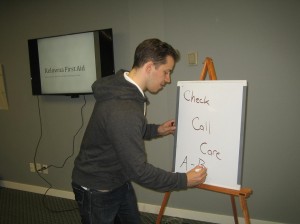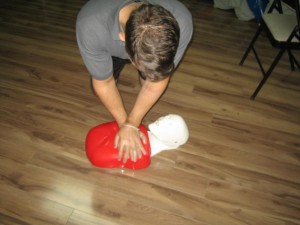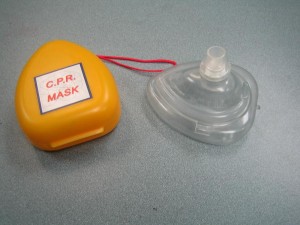
Are you prepared to manage basic first aid and CPR emergencies? Would you know what to do if someone needed CPR or if a loved one was having a stroke? Learn about these topics and more by signing up for an Ontario WSIB approved emergency first aid course with Hamilton First Aid. This large, experienced and popular provider offers this and many more courses at the lowest prices in Hamilton. A number of other courses are available including two-day standard first aid and childcare first aid. All of the above mentioned first aid classes include training in cardiopulmonary resuscitation (CPR) and in the use of automated external defibrillators (AED). Customers can also attend private courses and renew expiring awards. Safety programs are also available and include programs such as H2S awareness, WHMIS and TDG. A number of first aid services are also available including first aid and AED supplies, advanced safety equipment and workplace safety audits. This provider is happy to help with its experienced and knowledgeable customer service department. Use the contact information below to contact Mississauga First Aid for inquiries about available services or to register for a course.
Registration and Information
Enrollment for a training course with Hamilton First Aid is amazingly simple. Prospective trainees can easily register through the Hamilton First Aid web site here. They can also complete their enrollment through telephone or e-mail. Walk-ins during business hours in any of the training courses are also highly encouraged. More details and contact information about this provider are available below.
- Email Address: info@firstaidcourses.ca
- Website Address: http://firstaidcprhamilton.ca
- Toll Free Telephone Number: 1-888-870-7002
Hamilton First Aid
Topics Covered in Emergency First Aid Training

The following topics are covered in a Ontario WSIB approved emergency first aid course with Hamilton First Aid:
- CPR and AED rescues
- Unconscious non-breathing victim rescues
- Conscious and unconscious obstructed airway victim rescues
- How to move a victim
- When to stop CPR
- How to manage bleeding victims and victims of different types of wounds including amputations and embedded objects
- How to use the contents of a first aid kit
- How to stay safe when providing aid including how to use barrier devices and personal protective equipment
- How to recognize and manage circulatory and respiratory emergencies including heart attacks, cardiac arrest, allergic reactions, hyperventilation and shock
- How to recognize and manage sudden medical emergencies
Training facilities of Emergency First Aid Courses in Hamilton
All of the training locations with Hamilton First Aid are unquestionably clean, well maintained, and spacious. All training rooms are equipped with the latest training equipment for CPR, AED, and basic first aid. The training centers are easily accessible as well, within walking distance to public transportation, free parking, and restaurants.

Group Private Courses
Private classes are available to big groups of trainees or companies. To inquire about private training use the contact information provided above. This provider allows for courses to be held at its training facility or they can come to you.
Certification for Emergency First Aid Courses in Hamilton
St Mark James training certificates are awarded to trainees who are able to complete their enrolled course, provided a 72-hour notice is given prior to dropping out. Refresher courses for the renewal of expired certification is available twice a week at Hamilton First Aid.
Did You Know?
Chest pain caused by a respiratory problem
A pulmonary embolism is a clot from an artery or vessel that gets stuck in the pulmonary artery – the artery that delivers un-oxygenated blood to the lungs. This can cause chest pain because of lung tissue death as blood and oxygen delivery to the lungs slows or is cut off. Pulmonary embolism usually comes from the veins in the leg or the pelvis that detach from the original area and travel to the pulmonary artery.